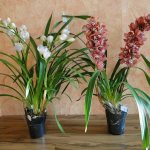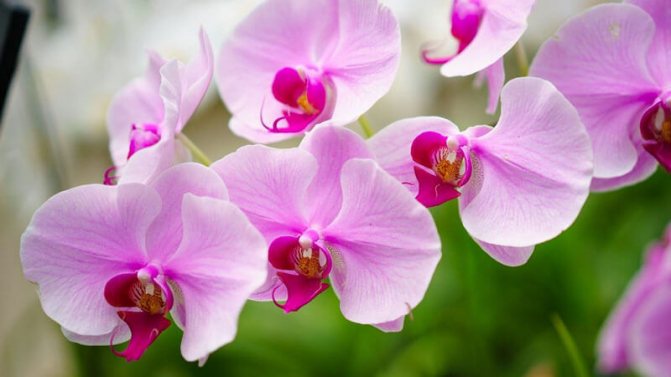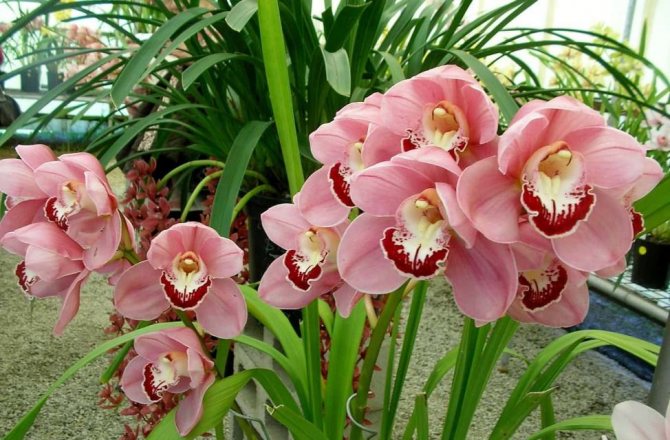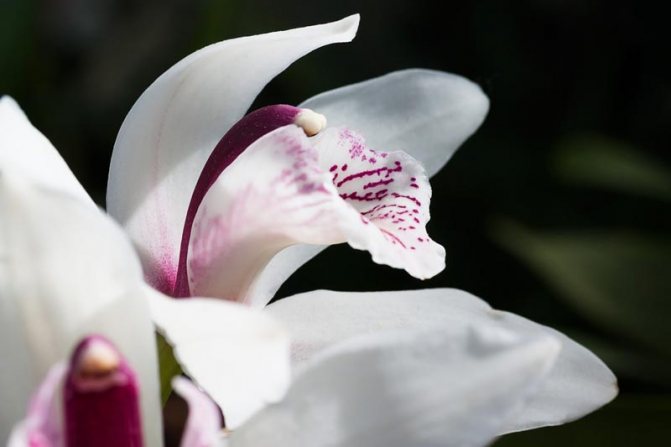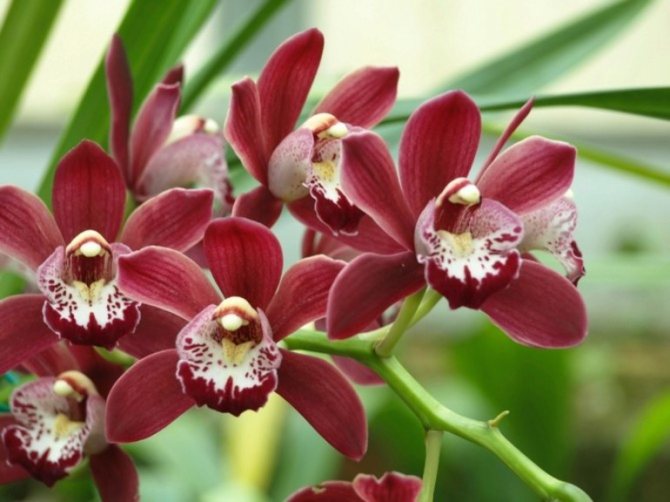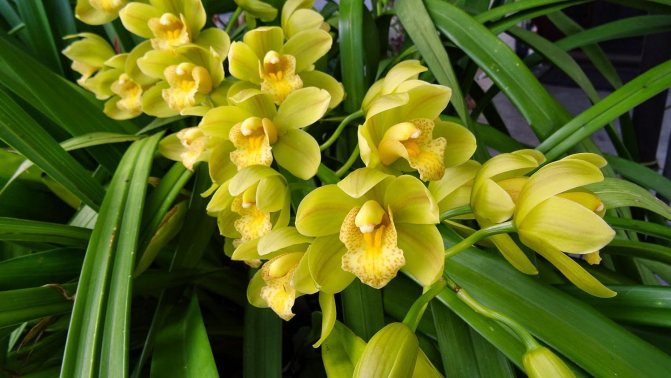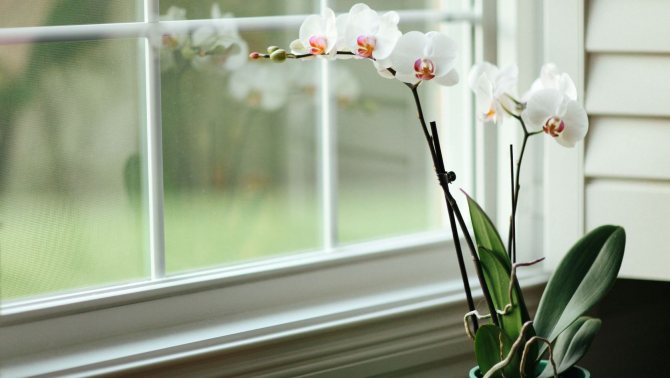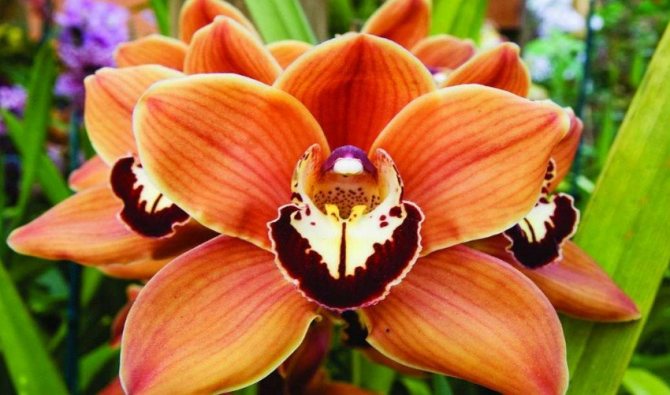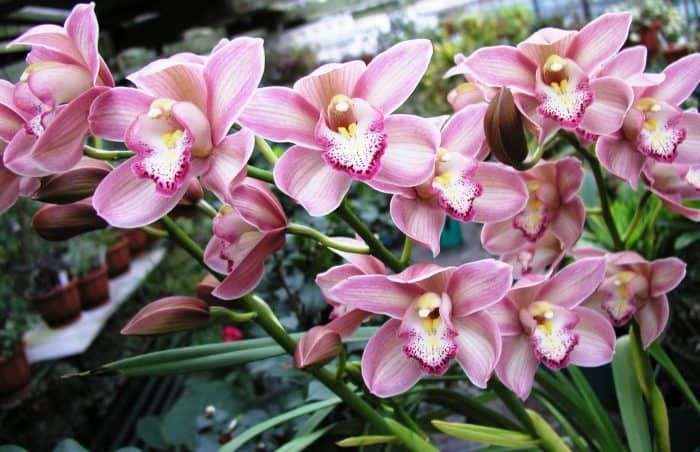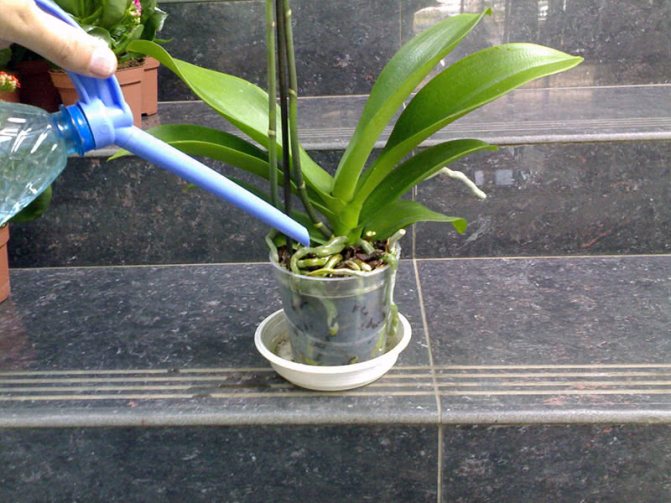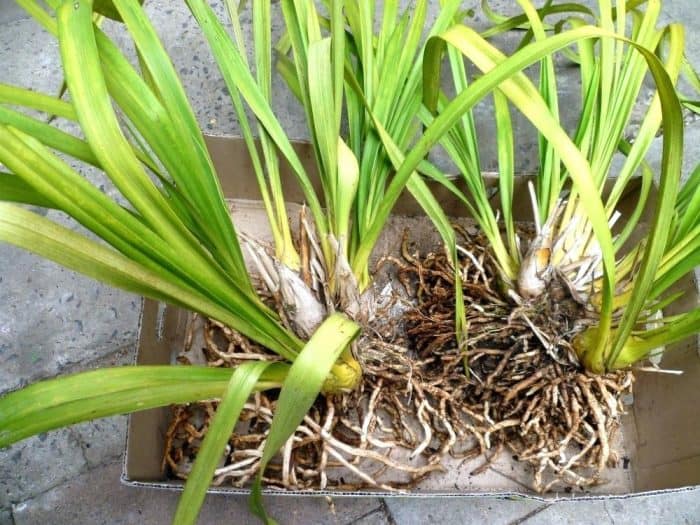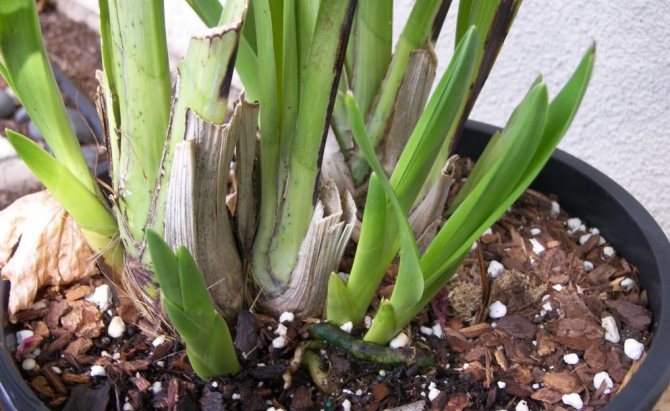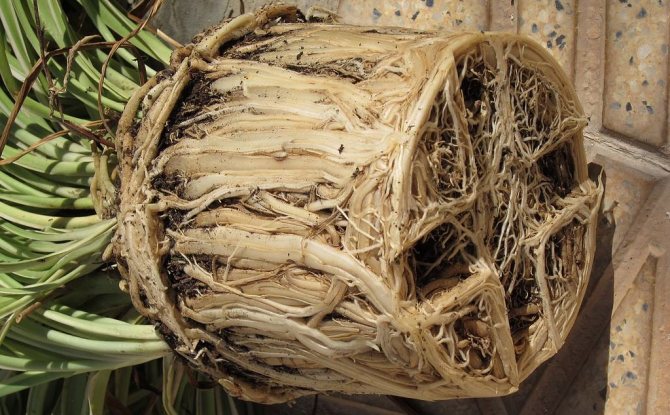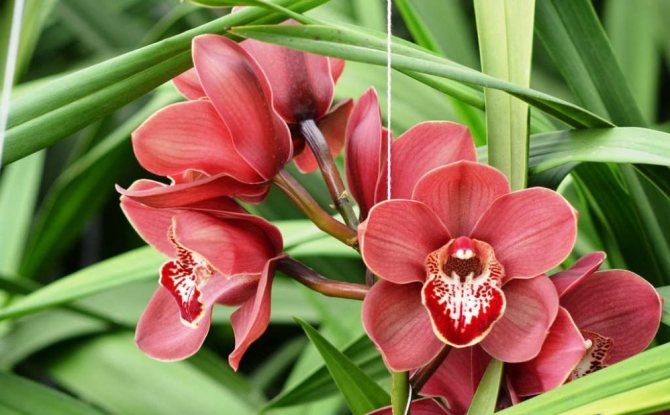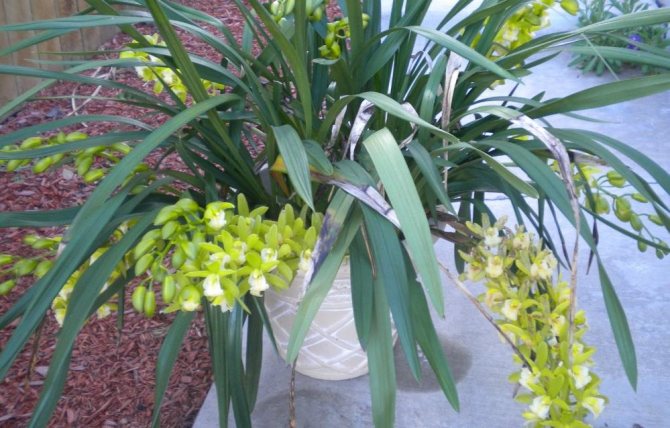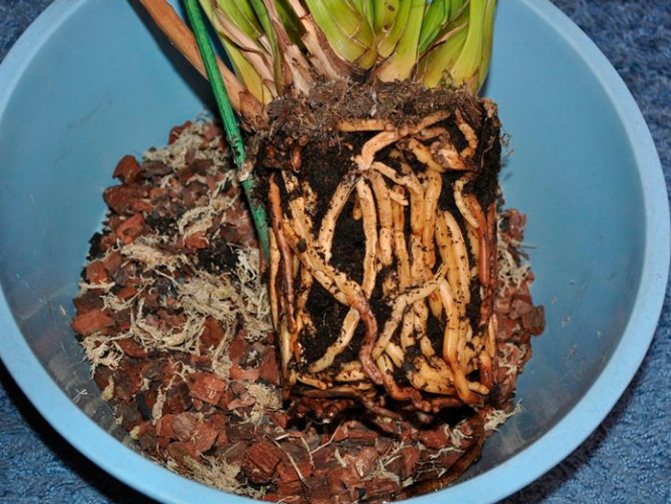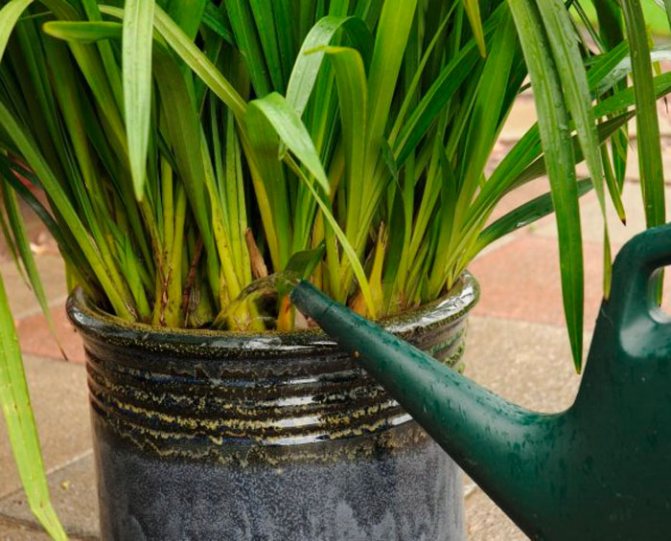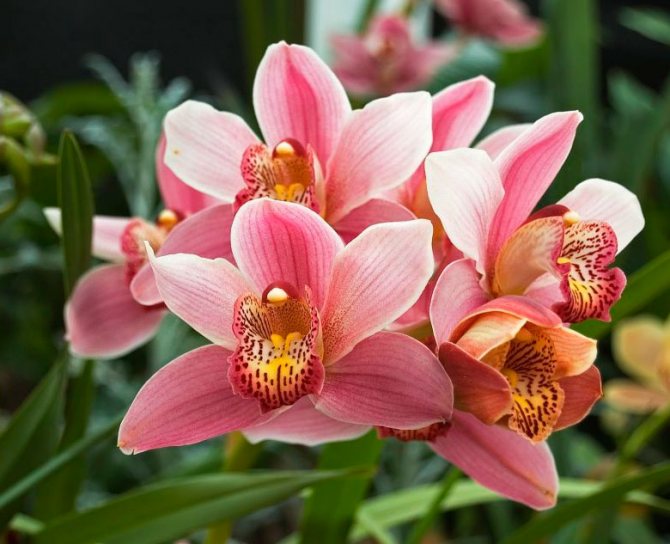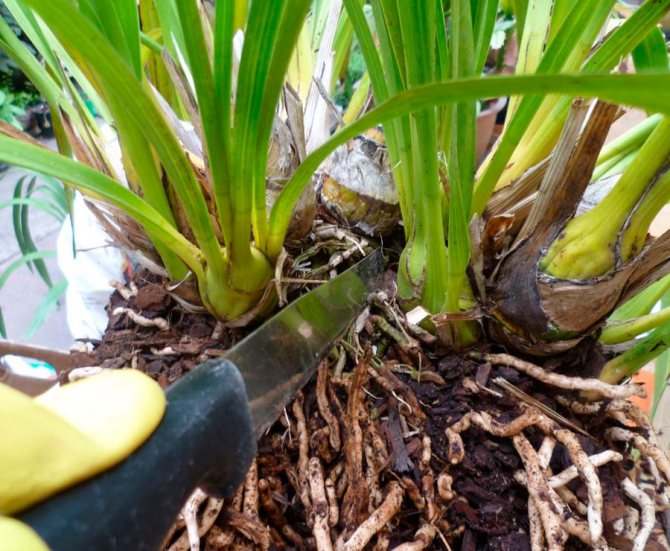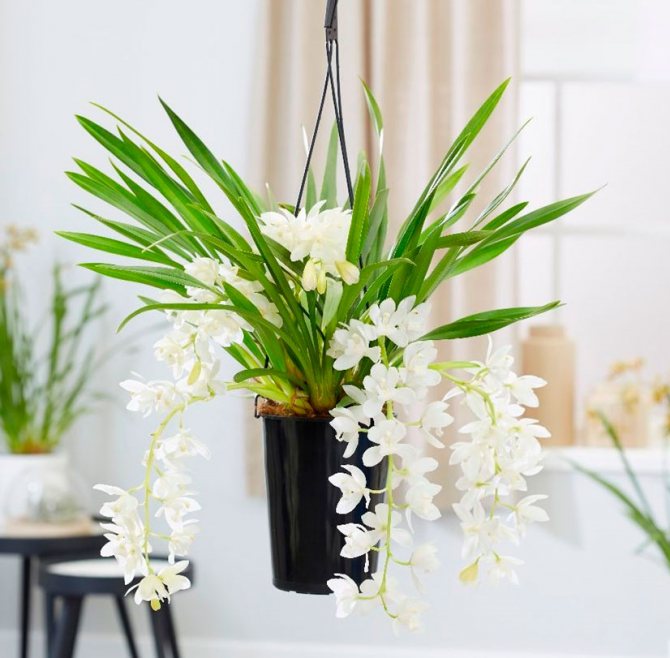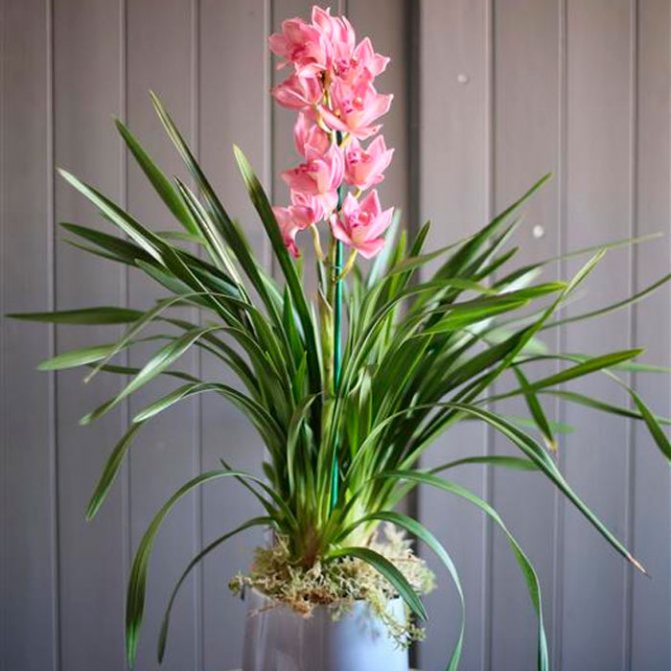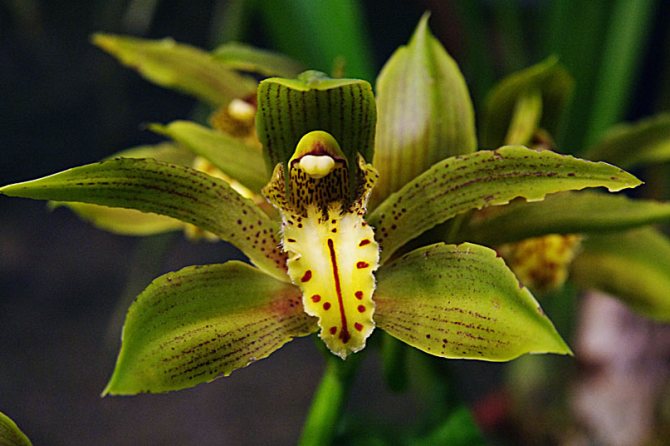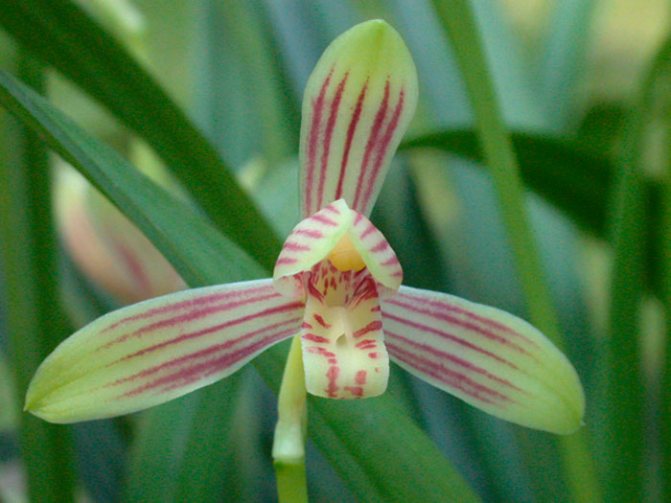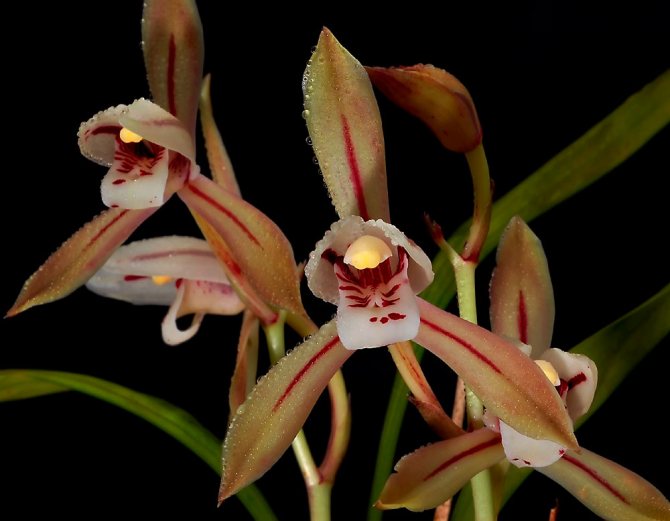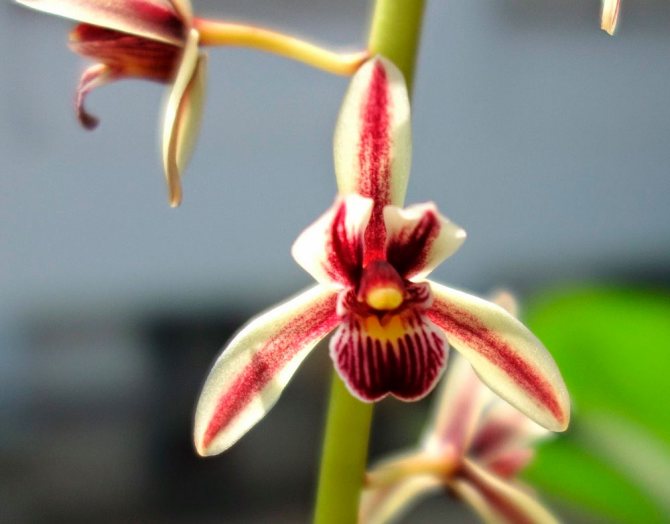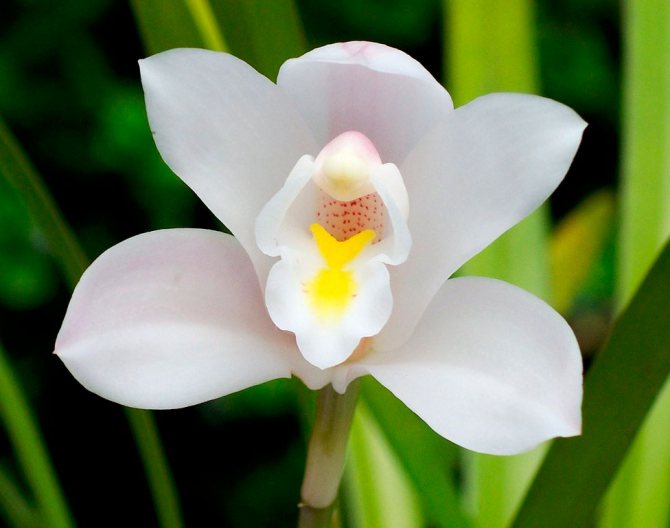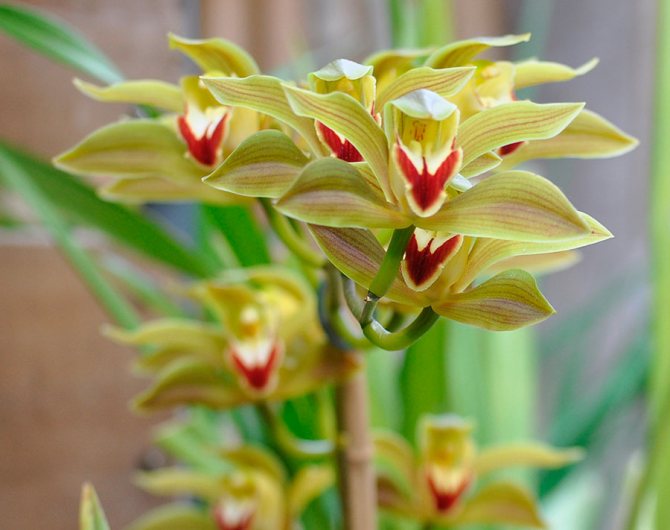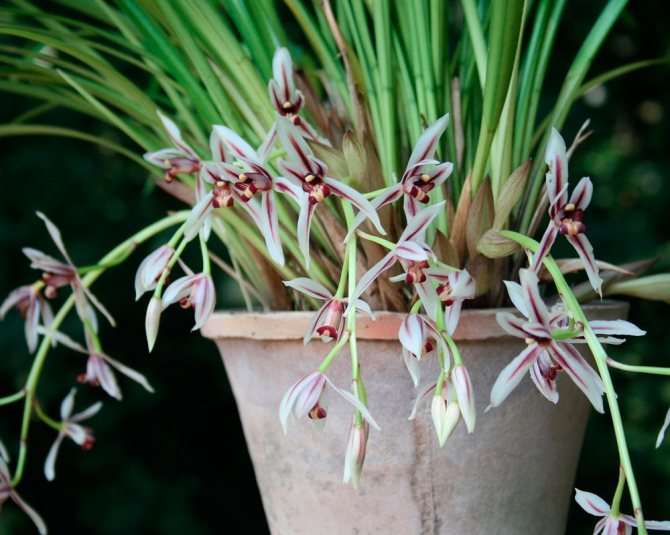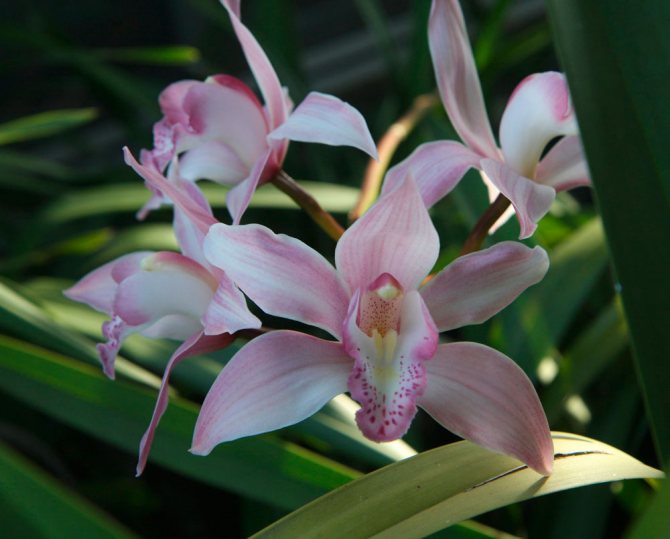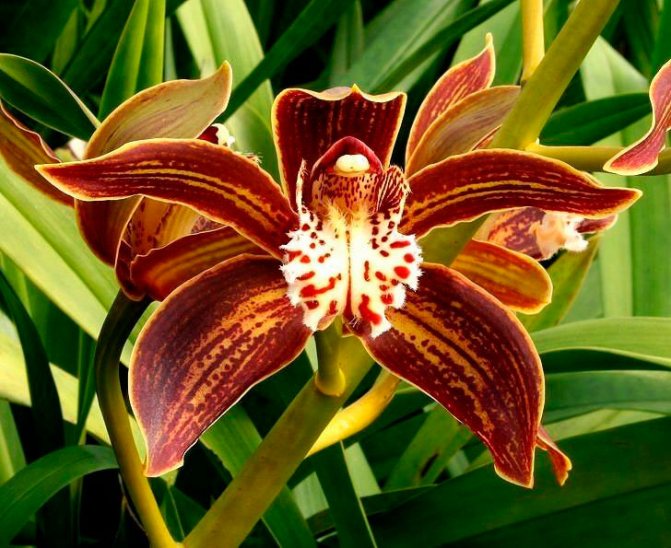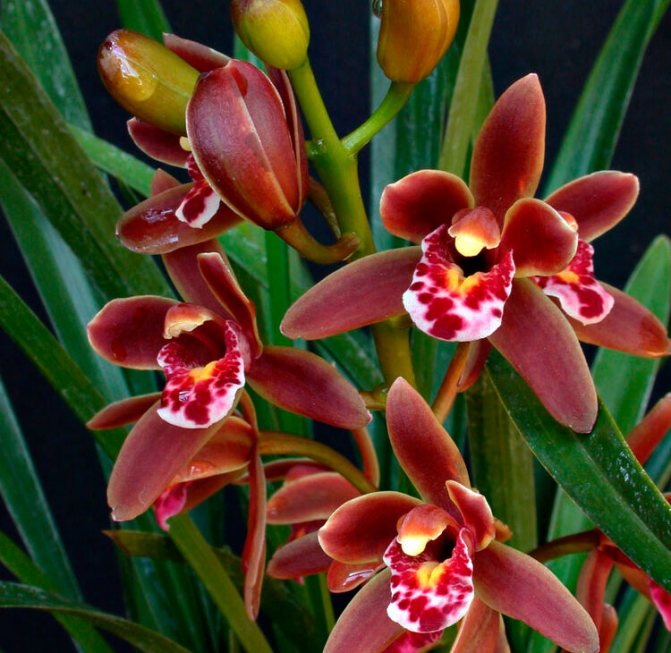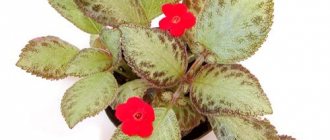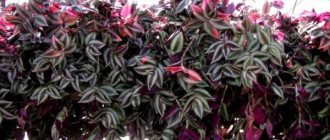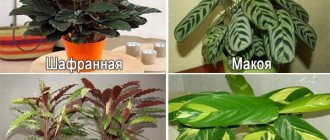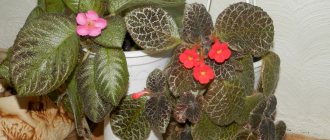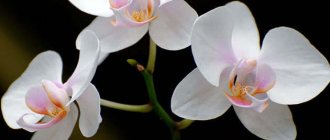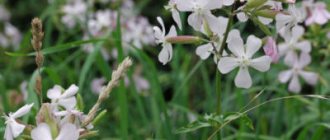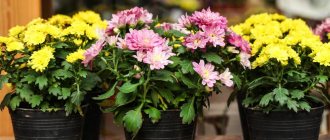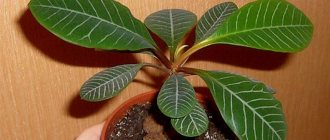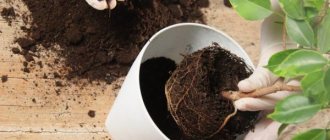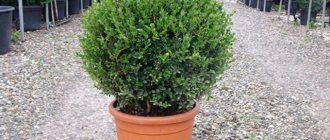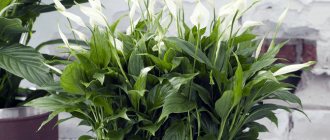The evergreen epiphyte cymbidium (Cymbidium) is part of the Orchid family. Such plants can be found in the subtropics of Northern Australia and Asia, and some species are found at an altitude of up to 2 thousand meters above sea level.
They began to cultivate such an epiphyte more than two thousand years ago in China. Cymbidiums were considered by Confucius to be the kings of fragrances. Today in Japan and China, natural species of this plant are cultivated very widely, among them there are forms of foliage and flowers of which are painted in different color shades. Small species are most popular with flower growers, because their flowers have the strongest aroma of all cymbidiums. Large-flowered hybrids are highly prized in Australia and Europe as cut crops. And in total, today more than 100 species of such a plant are cultivated. Peter Olof Swartz was a Swedish botanist who first described cymbidium in 1799.
General information about the flower
Cymbidium, like most orchids, is an epiphyte. Its habitat is the crowns and trunks of trees in tropical forests. In rare cases, you can find representatives of the cymbidium that grow on the ground, on rocky soil. The type of growth is sympoidal - the development of the plant does not occur due to the trunk, which the cymbidium simply does not have, but due to the formation of new rosettes of leaves, from which a peduncle appears in the future. Over time, pseudobulbs appear in the center, which are essentially the growth points of the orchid. The peduncle can be either straight or curved, directed downward - spectacular flowers are located on the peduncle itself. Cymbidium blooms for several months. Cut stalks will delight you with their beauty for a long time.
Home care for the cymbidium orchid
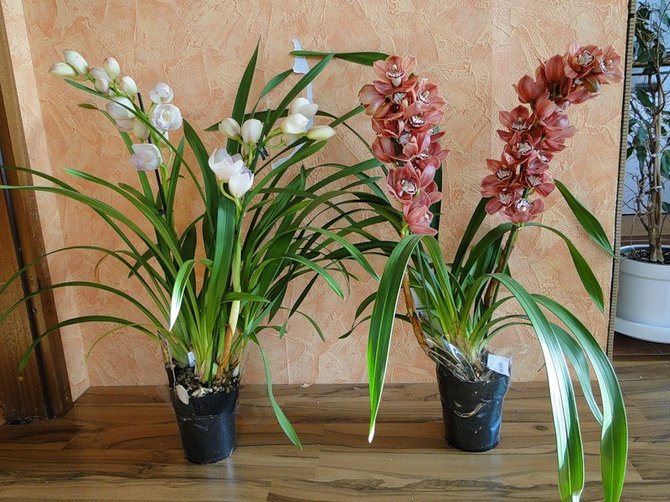
In order for the cymbidium at home to delight you all the time with its charming flowers, it is necessary to create acceptable conditions for the plant for development and flowering.
Lighting
As for the light, the cymbidium is very picky about it. Most orchids require constant lighting throughout the year. Therefore, when buying a flower, this should be taken into account. In winter, even more light is required than in summer. It is also worth understanding that the plant will not last long in the strong scorching sun either. Hybrids are certainly not as demanding, but that doesn't mean you should ignore the right lighting.
Watering and humidity
Cymbidium is a lover of high humidity, especially during the period of its active growth. Moisture cannot harm the plant, as this is its natural habitat. Watering should be abundant. When the cymbidium has a dormant period, watering can be replaced with regular spraying and humidification of the air.
Temperature
Most cymbidiums and their hybrids prefer cool conditions. It is very important that there are temperature differences during the day. It is necessary to ensure the temperature difference between day and night in the range of 8-10 degrees. Thanks to such differences, the cymbidium begins to bloom.
Due to the difficulty in maintaining a low temperature, many flower growers refused to grow this type of orchid at home for a very long time. However, over time, new cymbidium hybrids were bred, which became less whimsical to care for. But you still need to adhere to the correct temperature regime so that the orchid can bloom. During the dormant period, before or after flowering, the temperature should not exceed 10-13 degrees Celsius.
The soil
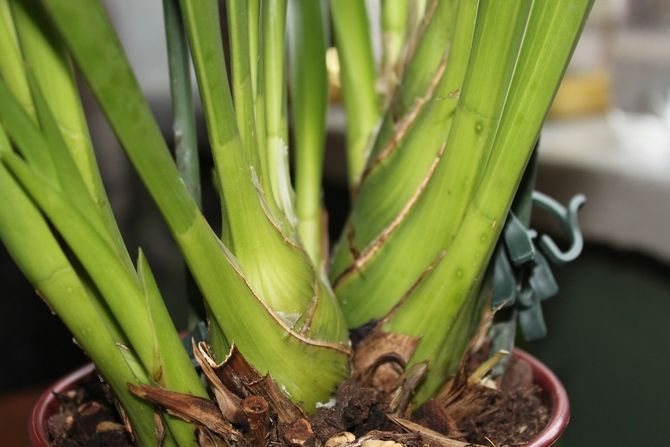

If you are not very versed in the composition of the soil, then it is best to purchase ready-made soil for the plant in specialized stores. When buying, it is necessary to clarify for which plant the purchase is intended, since the acidity and content of nutrients in each soil complex is different.
Suitable substrate for cymbidium:
- Pine bark mixture
- Dried Fern Roots
- Live sphagnum moss
If you decide to use ordinary soil, then the roots of the flower will begin to rot. This is due to insufficient aeration of the cymbidium root system. The more air flows to the roots, the less chance of waterlogging of the roots. With good aeration, the risk of the occurrence and development of pathogenic fungi is reduced to almost zero. Adequate oxygen supply ensures proper nutrition of the plant, thanks to the nitrogen contained in the air.
Top dressing and fertilization


Cymbidium is a flower that loves high-quality feeding. The plant is fed at least once or twice during the growing season. Top dressing is required at the beginning of the period, and then at the end. Orchid fertilizer can also be purchased at specialty stores. If this is not possible, then you need to dilute the universal fertilizer in a concentration that is twice the recommended dose.
Watering with fertilizers should only be done on wet soil. Nitrogen fertilizers should be as little as possible, especially before winter, flowering and dormancy. In winter, it is generally better not to feed the cymbidium.
If the plant is sick, then in no case should feeding be carried out, as this will only aggravate the situation and can lead to the death of the flower.
Orchid transplant cymbidium
If you create the necessary conditions for the growth and full development of the cymbidium: choose the right soil, ensure a high-quality temperature regime, watering, then very soon the orchid will begin to grow rapidly. Therefore, over time, it will need to be transplanted so that the rooting of new pseudobulbs continues. The new flower pot should be two or even three times wider than the old one. The depth of the pot is not so important for the cymbidium.
When transplanting, you must adhere to the following actions, the observance of which is mandatory:
- The plant is removed from the pot with gentle movements so as not to damage anything.
- The removal of the old bark is mandatory.
- Empty, damaged, rotten roots are removed - only healthy ones remain.
- If there are wounds on the roots, they need to be treated with activated charcoal, brilliant green or ground cinnamon.
- After the performed procedures, the flower is placed in a new soil.
- It is not necessary to deepen the pseudobulbs below the previous level. If this is ignored, then the green part of the plant will begin to rot.
It is recommended not to water for several days after the plant is transplanted. If the temperature in the room is high, then you need to additionally spray the leaves of the cymbidium.
Reproduction of cymbidium
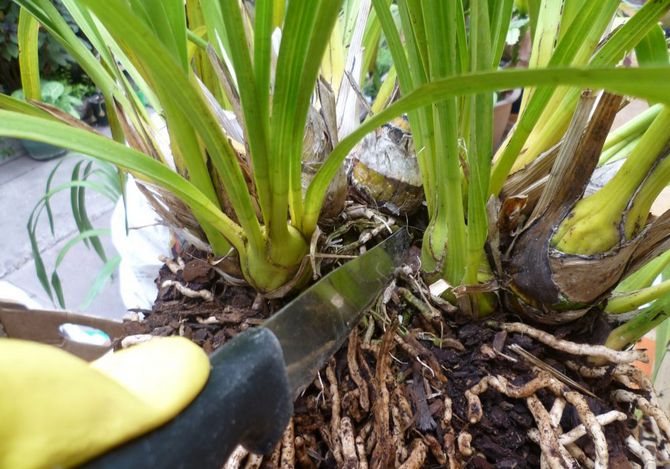

Reproduction of the cymbidium is mainly carried out by dividing the bush. This is recommended when transplanting a plant. The process is carried out with gentle movements so as not to damage the mother bush. It is advisable to separate at least three young pseudobulbs.This is because two shoots already have root shoots that will be able to feed the plant until the third has its own root system. Over time, new young shoots will appear on the mother plant.
Cymbidium can reproduce in other ways, but this requires specially created conditions. It is almost impossible to reproduce such conditions at home. Therefore, if you are offered to purchase cymbidium orchid seeds, then this is a fake.
Botanical description of the plant
Under natural conditions, the cymbidium orchid most often grows on other plants, since it belongs to epiphytes.
The species in question is distinguished by long and narrow leaves, which continue to function until they die off (up to 3 years). On the stem are inflorescences consisting of flowers. Each variety has a unique color that ranges from light shades (white, light beige) to bright multi-colored.
Did you know? Under natural conditions, cymbidium can be found in the Asian tropics and subtropics, as well as in the North Australian region.
Flowering lasts up to 60 days with proper care. The buds exude a pleasant aroma throughout the entire flowering period.
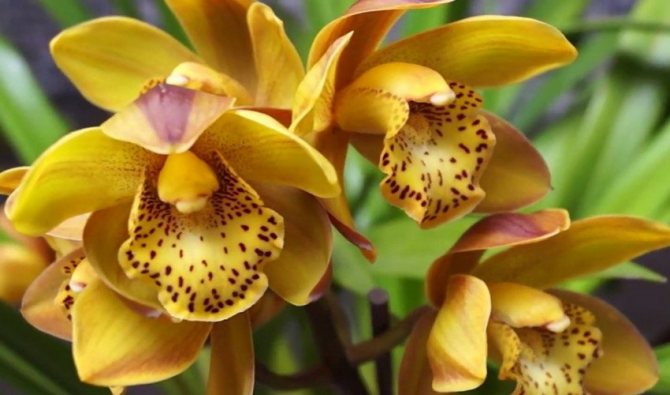

| Root system | Long, powerful |
| Stem | Tall, fast growing |
| Leaf shape | Narrow, long |
| Leaf color | Green |
| Flower shape | Depends on the variety, the petals are the same, have a crescent or lanceolate shape with a three-lobed lip |
| Flower color | White, light beige, pink, green, brown, yellow, red |
Cymbidium orchid flowering period
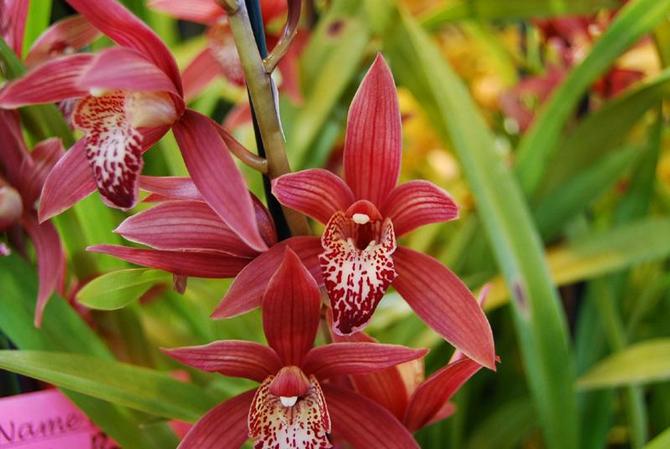

If you love to observe beautiful flowering, then you should give preference to modern cymbidium hybrids, of which, by the way, there are a lot. Spectacular flowers can last up to several months on the plant.
Types of hybrids:
- Standard hybrid. The height of the plant reaches 150 cm. The diameter of the flower with abundant flowering is 7.5-15 cm. Standard hybrids require a mandatory cool content.
- Miniature hybrid. The height of the plant reaches from 30 to 60 cm. The diameter of the flower during flowering is 2.5-7.5 cm. No special conditions are required for cultivation, they can develop well at room temperature.
The color of this flower can surprise everyone, as it is very diverse. Only the blue spectrum cannot be found in nature.
Popular types of cymbidium
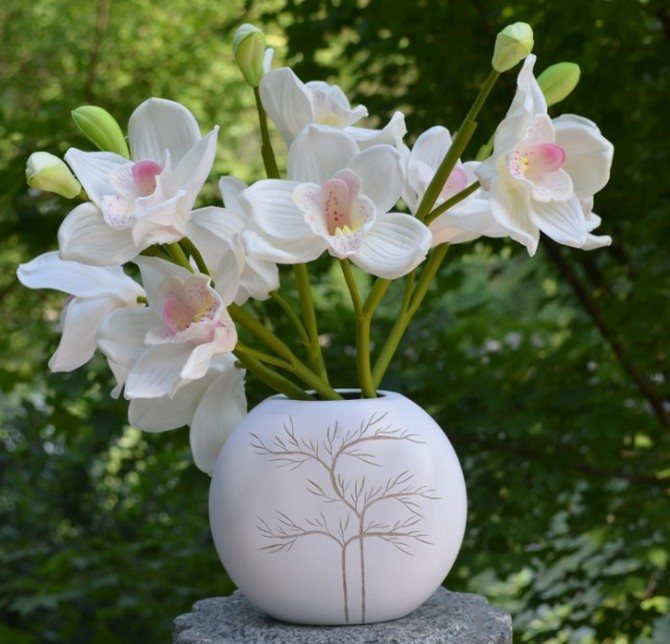

No matter how popular this flower is at the present time, it cannot be purchased at any flower shop. On display cases are always hybrids, but not the natural species of cymbidium.
Cymbidium Eberneum - represented by a yellowish-white color of flowers. The peduncle is erect, which appears in winter. Requires cool conditions for its development. The flowers have a pleasant scent and are decorated with yellow spots on the lips. The diameter of the flower is up to 7.5 cm. There are no more than two flowers on the peduncle.
Cymbidium Tracy - this flower is not wide, has reddish-brown stripes on the petals. The flowers are fragrant, there is a creamy lip with small red spots. Flowering usually occurs in early autumn.
Cymbidium aloe leaf - requires a moderate room temperature. Leaves are hard, belt-shaped. Flowering peduncles, no more than 50 cm in length. Flowers have variegated lips that are loosely arranged. The flowers themselves are brownish, with a light border. Flowering occurs from spring to autumn. It prefers to grow on a snag or a piece of bark.
Cymbidium dwarf - a rather rare species, although very effective. The peduncle is small in size - 12 cm. Flowers are 10 cm in diameter. The color is red-brown, the edges are yellow, the lip is cream. Flowering occurs in winter.
What does it look like?
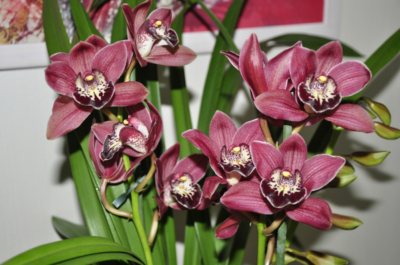

Cymbidium is a large representative of the Orchid family... Its peduncle reaches 1.3 m in height.The flowers are collected in loose clusters that hang down freely. The buds have different sizes, depending on the species, from 2 to 20 cm.
Common petal colors:
- Shades of brown and burgundy... In this case, the "lip", as a rule, is lighter, almost white, has a certain amount of spots.
- Color, from bright yellow to green... The “lip” has the same shade as the petals, and bright red blotches can often be seen on it.
- Cream or Milk Orchid, with a light "lip", which is decorated with small, bright strokes.
Diseases and pests
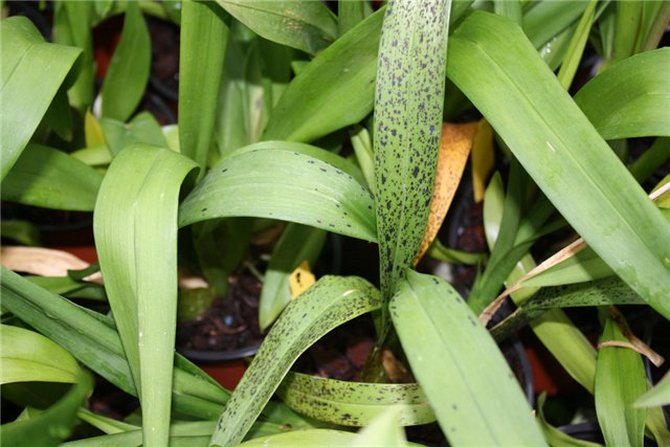

If the air in the room is dry, then the cymbidium can become infected with spider mites. When infected with a tick, the leaves become dull in color. It is imperative to spray the plant, wipe the leaves with real beer.
Thrips - can be transmitted from other infected plants. In this state, the flower finishes flowering faster. To eliminate thrips, it is worth spraying the plant with any insecticide after shaking the cymbidium a little.
Decay of the root system - observed if the cymbidium is in a cool room, watering is immoderate or the substrate for the flower is chosen incorrectly. In this case, the plant is taken out of the soil, dried, the rotten rhizomes are cut off, then dipped in activated carbon or cinnamon. Then it is dried and placed in a fresh substrate. Watering is carried out only after the appearance of the first roots. Before that, it is recommended to replace watering with spraying the leaves.
If the tips of the leaves are brown or yellow, then there are problems with the roots. It is necessary to carefully examine the entire root system. If there are dark streaks on the leaves (but not on the tips), then this indicates a viral infection. In such a situation, the plant cannot be saved.
Cymbidium is a spectacular flower that, with proper care, will actively grow and delight you with its beauty for many years.
Growing problems
Improper care leads to the following problems when growing cymbidium:
| Problem | Methods for correcting the situation |
| Rolling the leaves | It is necessary to feed the plant with magnesium and potassium fertilizers. Do not take the orchid pot out of a warm room into the cold. |
| Rotting and yellowing of the bulb | It is necessary to remove the decayed area with a sharp sterile instrument and sprinkle the cut with cinnamon or charcoal. The plant does not need to be watered for a week, and after irrigation, water should be removed from the leaf axils |
| Blackening of leaf tips | The substrate must be dried, and the plant must be watered according to the scheme and shaded from the sun |
| Yellowing of leaves | The orchid should be properly watered and fed |
| Falling buds | You need to feed the orchid with phosphorus or calcium fertilizer |

